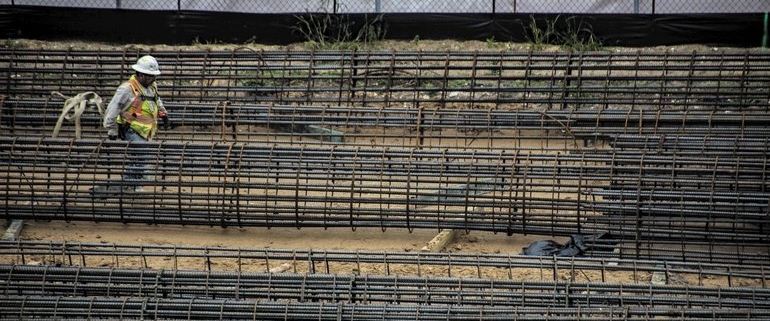PRO Act Provisions Could Figure in $3.5 Trillion Federal Spending Plan
By Christopher Ruvo | Originally posted on www.asicentral.com
The PRO Act, a major labor reform proposal, has caused concern in the promotional products industry.
Proponents of the PRO Act are trying to advance aspects of the sweeping, potentially historic labor reform legislation without passing the full act itself – something that could impact the employer-employee relationship across industries.
Members of Congress that support the Protecting the Right to Organize Act (PRO Act), who are overwhelmingly Democrats, are looking to move some tenants of the bill forward through special rules related to the federal budget.
In particular, they’re attempting to enact provisions that would impose civil penalties for so-called unfair labor practices (ULPs) and to establish new ULPs. These PRO Act pieces would be components of a broader attempt by Democrats to pass a $3.5 trillion spending plan through a process called “budget reconciliation.”
Budget reconciliation allows for certain measures tied to federal spending to be passed with a simple majority vote. PRO Act proponents are attempting to go this route because even though the legislation passed in the Democrat-controlled House earlier this year, it has been stymied in the 100-member Senate where effectively 60 votes are required to overcome a filibuster and pass bills into law.
The Senate is split 50-50 between Democrats (or independents who caucus with them) and Republicans. The GOP opposes the PRO Act. Reconciliation would allow Democrats to pass the bill with their 50-person group and Vice President Kamala Harris as the tie-breaking vote.
Still, getting the full PRO Act passed by reconciliation appears to be unlikely given strict rules – enforced by the Senate Parliamentarian – on what’s allowed to be approved through the process, according to legal experts. Getting a few pieces of it onto the books, however, may be more feasible. And that’s just what Democrats are lining up to do by including it in the multi-trillion dollar spending plan that could soon go through its own budget reconciliation process.
New Civil Penalties
Legislative language released Sept. 8 would create new civil penalties under the National Labor Relations Act that “fundamentally change its nature from a ‘make whole’ remedial statute into a punitive one,” reported legal intelligence source JD Supra.
“As introduced, the reconciliation bill would add fines of up to $50,000 per violation for ULPs under the NLRA,” JD Supra continued. “Where an employer commits a ULP by discriminating or retaliating against an employee for engaging in protected activity, or where an employee is discharged or suffers ‘serious economic harm,’ these fines would be doubled to $100,000 per violation if the employer has committed a similar ULP within the last five years.”
What amount to new ULPs beyond what are contained in the Act are also part of the provisions that could be considered through budget reconciliation. These prohibit things like permanently replacing a striking worker, locking out employees, and entering into or enforcing any prohibition on joint, class or collective action, among other things. “This last provision would essentially ban the use of arbitration in employment cases for unionized and non-union employers alike,” JD Supra reported.
Company directors and officers could be held personally liable for violations.
“Under current law, the fine you pay for a parking ticket is greater than the fine companies pay for violating workers’ right to organize a union,” wrote Rep. Bobby Scott, D-Va., in a July release supporting the provisions’ inclusion in the budget process. “Creating financial penalties for unlawful anti-union activity will finally deter employers from violating the law and will better protect workers’ rights.”
Trade groups, such as the construction industry’s Associated Builders and Contractors, oppose having the provisions in the reconciliation proposal, saying that enacting them will hurt businesses.
“Reports have indicated that the bill could seek to insert harmful labor provisions in the reconciliation package, which could include increased monetary penalties for employers that ‘interfere’ with workers’ union rights, leading to unwarranted and frivolous lawsuits that could have a devastating impact on construction employers,” opined Kristen Swearingen, ABC vice president of legislative and political affairs, in a report from Construction Dive.
What About the PRO Act’s Proposals on Freelancers?
What does not appear to be included in the reconciliation attempt are parts of the PRO Act that would, according to critics, largely wipe out independent contractor status under most scenarios and compel companies across industries in the U.S. to reclassify such contractors as employees.
Those proposals caused significant concern in the promotional products industry when they came to light in early 2021. Some promo professionals believe enacting the PRO Act’s independent contractor rules could exponentially drive up industry firms’ labor costs, making companies less competitive, and/or compel companies to part ways with many of those currently classified as independent contractors, leading to a rash of hard-working promo professionals being put out of work.
While certain freelancers, such as some rideshare drivers, are in favor of the PRO Act, other freelancers, including many in the writing community, have been loud critics as they worry the bill will eradicate their livelihood and rob them of the relative independence they have in their work life.
Writing earlier this year for pro-socialist publication Jacobin, labor lawyer Brandon Magner said the PRO Act would not kill freelancing or cause damage to freelancers.
“It would only affect the analysis of employee versus independent contractor status for the purposes of the National Labor Relations Board,” Magner wrote. “Put simply, the relevant question is whether certain workers possess rights under Section 7 of the [National Labor Relations Act], which guarantees employees (and employees only) the right to strike, collectively bargain, and engage in various other ‘concerted activities’ for ‘mutual aid or protection’…”
Magner said the Act’s proposals on freelance work “would not change a worker’s employment status for the purposes of state laws, such as those involving minimum wage, overtime, unemployment compensation or various benefit schemes. Thus, a worker could feasibly be classified as an employee with unionization rights under the NLRA while still qualifying as an independent contractor under said state laws.”
Some freelancers aren’t buying that line, though.
“Union proponents of the new bill, as well as politicians beholden to the powerful groups, insist that it’s only about expanding the people who can be in unions,” Erik Sherman, a freelance business, economics, finance and tech journalist, wrote for Forbes. “Not if you look at the evidence… The result would be to outlaw millions of independent contractors (probably about 10 million at current IRS estimates of actual ongoing business owners), presumably clearing out people who might compete with union members.”





